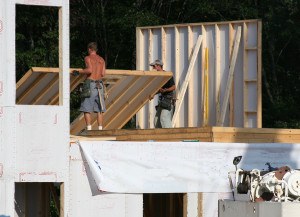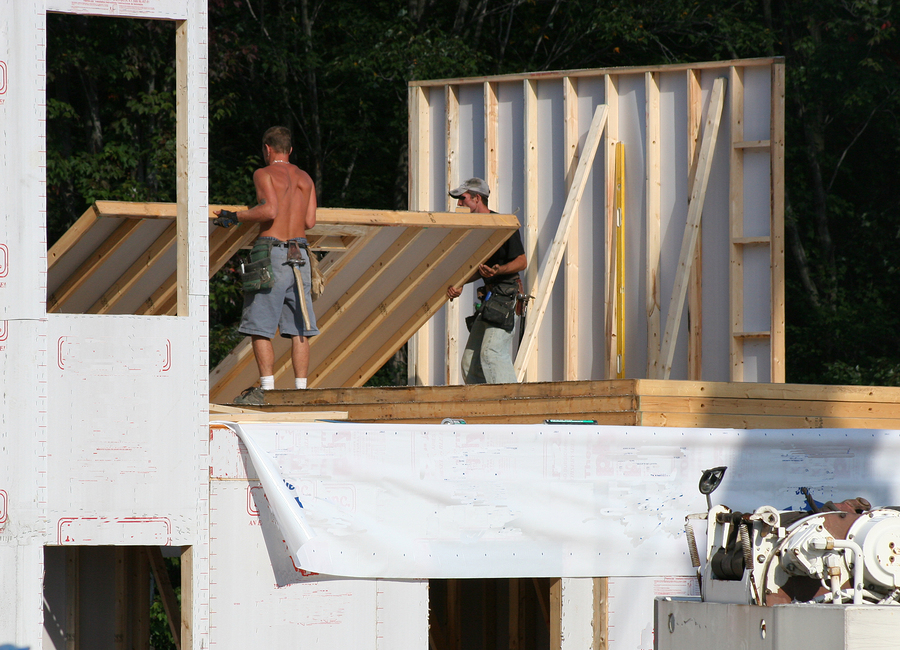Even as the third anniversary approaches of Hurricane Sandy‘s bashing of the East Coast, the effects of the storm are still felt by many Connecticut residents, and a local homebuilding company is among those trying to make things right again.
Westchester Modular Homes of Fairfield County, whose Connecticut offices are in Bethel, has been working with the victims of Superstorm Sandy since shortly after the storm hit the region on Oct. 29, 2012, company President Paul Scalzo said.
“Our New Jersey branch started shortly before us, but we quickly began getting calls from Connecticut residents to help with their homes,” said Scalzo. “It led into our involvement with the Connecticut Department of Housing’s Community Development Block Grant and the Superstorm Sandy disaster recovery program, which provided funding to victims of the storm, and we became one of the two authorized modular home builders for the fund.”
Since the state accepted their application to the program, Westchester Modular Homes has finished more than a dozen homes for victims of the storm. The homes the company builds change in price and size, ranging from $240,000 to more than $1.4 million.
The reason for such a wide range is because of the customization and specific situation of the customer, said Scalzo, and they look at each house on a case-by-case basis.
“Some of the houses are on postage-sized land, and the entire house is only 900 square feet,” said Scalzo. “We have to build (the homes) to new standards, so the foundations tend to be a bit more expensive, but typically what people who have waterfront houses do is build what they can afford or what the lot can fit. It’s a different situation for each person.”
The company, which has built houses for victims in towns along the coast from Greenwich up to Milford, prides themselves on the speed and cost control they offer that other traditional “stick-builders” are unable to guarantee.

“The house is built almost entirely indoors, in our factory, and can be manufactured in five days,” said Scalzo. “We can pretty much build a lot of what people want in their house, and we control our costs very effectively. In one day you could leave for work and nothing would be on the lot, and when you got home that evening you could have a weather-tight home built.”
The houses they build range from 800 square feet to close to 6,000 square feet, said Scalzo, and that it depends on the lot size and how the pieces can be built in the factory. He added that the company has their own equipment and machines and builds the houses themselves, and that the most time-consuming elements in the process come from waiting for building approvals and inspections.
“The state is used to a house taking six to eight months, and for one of the victims of the storm we worked on through the state, we told the state that we would have it finished sooner, and they couldn’t believe it. We finished the house in a month, and the woman I worked with at the state was so shocked that she came down to look at the house. The entire process took us six weeks, and it would’ve been sooner if there hadn’t been a backorder for certain things we needed, it would’ve been sooner. It makes the families happy, and the state happy, so it is easy for us to do,” said Scalzo.
Customization is a key feature to what makes their homes so attractive, said Joe Enright, the general manager for the company.
“People think that a modular home can only be a certain house, and we can’t custom design anything, but in reality we custom design every house,” said Enright. “We price per the job, whether it’s a small ranch or a custom colonial on the water with lots of glass and great views, we price per house. It’s important that we custom price because every person’s situation is different.”
The customization that the company offers allows people to completely design a brand new house or take one of the basic models and expand on it in their own way, said Scalzo.
“Everything is custom. We have people who work in our offices who give 3D renditions of houses, and we have planners who will sit with you and verbally design a house to create a model, so you can pretty much do whatever you want within your budget,” said Scalzo.
Westchester Modular Homes has adapted to focus some of their work toward houses of victims from natural disasters and other issues that may arise. They plan to open a commercial division of the company that focuses on these contracts, and are in the works of building a website for the division.
Although no one hopes that future natural disasters leaves residents of Connecticut in similar states as those following Superstorm Sandy, Enright predicts that there will still be business in this sector, especially rebuildings that followi destructive flooding or fires.
“We continue to do jobs for houses ruined from floods, for someone who was unfortunate enough to have their house burned down, we’re always going to be there to help someone who has an issue, and people will always come to us because of our savings in time and cost,” said Enright.
Scalzo also points to the change in public opinion toward traditional “stick-building” companies as another reason for their increased popularity.
“Traditional building isn’t the highest of what it’s been, and it’s because people want a home quickly,” said Scalzo. “Five years ago, if you had called us, we were building homes for people who liked and wanted modular homes. Now we’re very good at this, it’s kind of becoming a niche for us, because people and insurance companies like how fast we can rebuild. It’s become about 60 percent of our business.”
John McNamara, of Fairfield, had his house damaged during Sandy. After hearing about the success of modular homes in Louisiana following Hurricane Katrina, he searched online and found Westchester Modular Homes.
“They had a great website, and (their houses) would survive a storm,” said McNamara, “and when we started looking more and getting in contact with them, they were very professional.”
McNamara had a deadline for moving into the new house, from the rental house he was currently living in, so he was impressed with how quickly and efficiently the house was built.
“The longest part of the whole process was the application and forms from the town,” said McNamara. “They had already built the house in the warehouse, so from the time they said ‘let’s go,’ within the week they started putting the foundation in. They started construction in April and we were in the house by the end of August.”
McNamara notices almost nothing different about living in the house, and prefers it rather than had it been built by a traditional homebuilding company.
“In the conditions we had in the winter on the beach this year, the winds howl, but the house was so tight. There was not a draft, and that’s the thing I like about the house. They’re not building outside and rushing through, it’s a different way of building, and it’s very tight and comfortable.”
Was this article valuable?
Here are more articles you may enjoy.


 Synopsys Sued by Private Equity Firm for Shopping $3 Billion Unit
Synopsys Sued by Private Equity Firm for Shopping $3 Billion Unit  Hawaiian Electric Hits 40-Year Low Ahead of Maui Fire Report
Hawaiian Electric Hits 40-Year Low Ahead of Maui Fire Report  Texas Among Several States Facing New Fire Risks: Weather Watch
Texas Among Several States Facing New Fire Risks: Weather Watch  Dog-Related Injury Claim Payouts Hit $1.12B in 2023, Report Shows
Dog-Related Injury Claim Payouts Hit $1.12B in 2023, Report Shows 